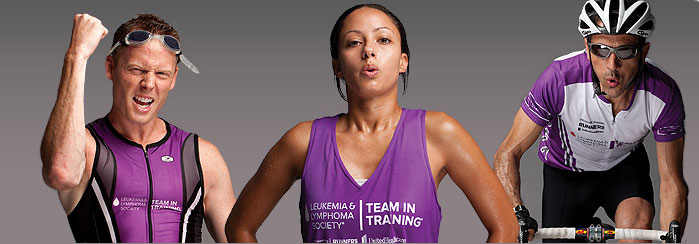From Coach Jenny Hadfield:
Shoes are like cars. They are a convenience and provide comfort, style (in most cases), and efficient travel from point A to B without having to think about every single step or worry about the elements along the way.
And like cars, there are a variety of shoes that run along a continuum from the least amount of protection (shoes that look like gloves for your feet) to the most protection (heavy stability shoe).
The more minimal the shoe, the more the foot, ankle, and lower leg actively supports and stabilizes your body in motion. The bulkier the shoe, the more the shoe does the work for us. It's very much like driving a stick shift car versus an automatic. Neither are bad, both are driving, and both have unique benefits.
Newsflash: We are born into the world barefoot. From there we learn to crawl, then walk barefoot, and then we go through the awkward transition to walking in shoes. Eventually that leads to running in shoes and wearing high heels and other fun foot accessories. 
If you start with the premise that we were all made to move from one place to the next shoe-free, you'll begin to see how shoes come into our lives for the benefits mentioned above. Although it may look and feel weird to run in less underfoot, it is a very natural skill.
But, does that mean every runner should switch to minimalist shoes? It depends.
It depends what type of shoes your body is used to running in now—the more support, typically the longer the transition time to running with less. Be cautious. If you switch from a supportive shoe to a minimalist shoe and keep running like nothing has changed, you're likely to get hurt. Taking it slowly in the minimalist world means starting with just seconds of running at a time, and spending months, if not years, transitioning. The benefits are incredible, but it isn't a free ride—you have to earn the strength to support your body to run in less.
It depends if you are willing to commit to strengthening your feet and ankles (and core) and taking the time to learn how to run with different technique. It will take time and patience. I advocate lower body strength work first then lower impact activity in less shoe or barefoot (walking, elliptical) and then very short spurts of running (seconds)—all of which are meant to strengthen your lower legs and develop a solid foundation.
It depends on what your running routine is—are you training for a marathon, or running for recreation or weight loss? The more demands your body has in terms of performance and training, the more gently you'll need to transition into less shoe. In other words, it's not a great idea to switch to a minimalist shoe during your marathon training season as your body is already under great stress from the volume of miles. A better option is to weave it in during the off-season or in the lower mileage weeks of your season. That said, outside of the peaking weeks of mileage in training—it is always a great time to strengthen your feet, ankles, and core.
And, it depends on the runner. Some can put on less shoe, without socks, and run from Chicago to Denver (and back) without a problem. I have a friend Marc who has Dean-like form and can run for days in a shoe that is so light and minimal, he had a hard time finding them in the closet. On the flip side, I also have a friend who, in just the act of trying on minimalist shoes, develops an instantaneous pain in his arch. I'm somewhere in the middle and have been transitioning to less shoe for over two years now (and loving the journey).
Regardless, every runner can benefit from the minimalist movement. That is, we can authentically strengthen our bodies, which will help depend less on the shoe to do the work and from that foundation, progress based on what your body will allow and respond too.
Some runners find themselves with less pain after transitioning to running in minimalist shoes or barefoot. Others have gone from a heavy motion control shoe to a lighter shoe with less support—a great progression! Still others have reaped the benefits of having stronger feet, but still prefer (and possibly need) to run with more support under foot.
One pathway to train slowly toward running in less shoe:
- Strengthening lower body and core (a house with foundation made of straw will quickly be destroyed when the high winds settle in).
- Weight-bearing strength barefoot (balancing on one foot)
- Weight-bearing movement with less under foot (walking or elliptical—lower impact activity provides a more gradual transition to weight-bearing activity with less underfoot).
- And if that goes well (no aches, pains, or injuries), weave in short (seconds to minutes) of barefoot walking around the house while continuing to use the minimalist shoes for walking, elliptical...
- If that goes well (no aches pains or injuries), focus on learning how to run naturally (some call it barefoot—others call it minimal). This way your body learns the natural running motion and it will be translated when using a minimalist shoe. This is a drill with the specific purpose to learn the mechanics of running with less underfoot. Some runners know this authentically—while most, when they put on a minimalist shoe, run the same way as they do in a supportive running shoe (not good). If this is the case, take your time and learn this step. You have to learn to crawl before you run and you also need to learn to run without (barefoot) before you run farther with less (minimalist).
- Practice patience and flexibility. Because running in minimalist shoes with natural form uses a host of other muscles (specifically your calves and muscles in your feet) if you plug these shoes (minimalist) into your regular running plan like any new pair of shoes, you will be at a very high risk of developing calf, Achilles, and other foot injuries. I'm hearing and seeing this in epic proportions in runners—be cautious folks! Think of this as a tool on your toolbox—and a strengthening tool at that.
Start with developing a strong foundation.
Let your body be your guide.
And progress to less as your body allows.













